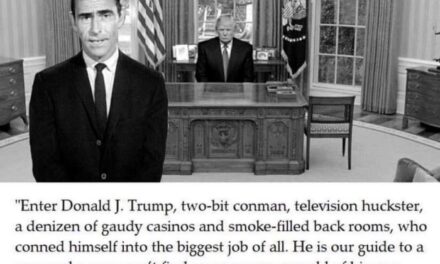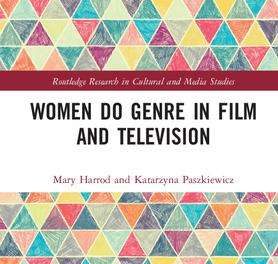In 2016, several UK universities regrettably adopted the use of trigger warnings to signal ‘potentially disturbing’ material on course syllabi. Learned institutions, such as Goldsmiths, London School of Economics (LSE), Edinburgh, Stirling, Glasgow, Central Lancashire, University College London (LCL) and Oxford, have readily embraced the trigger warning concept with, it would seem, nary a review of extant research literature nor a properly sophisticated understanding of the way in which trauma operates on individuals. Whether or not trigger warnings have been forcibly implemented by institutional powers, employed by lecturers themselves for personal or political reasons, or to address a growing demand from the student body, is difficult to ascertain. What is certain, however, is that trigger warnings are not supported by extant trauma research nor do experts in the field consider them to be ‘best practice’. How, then, have they sneaked into university classrooms?
The genesis of the trigger warning began not in the field of psychology or cogent disciplines, as one might reasonably assume, but on the Internet, on feminist blogs such as Feministe, xoJane and The Hairpin, or personal user-generated blogs. Topics would vary, but common threads would include discussions about eating disorders, anxiety, depression, and most frequently, sexual assault and rape. Although the term did not truly crossover into the mainstream until around 2013 – ‘the year of the trigger warning’, according to Slate’s Amanda Marcotte – a variation of the term ‘began appearing on feminist message boards in discussions of sexual assault from the late ‘90s’ onwards’. In the early 2000s, the use of ‘content notes’ began to be endorsed by fan fiction writers although, as Bitch magazine’s Andi Zeisler states, the trigger-warning phrase was ‘never used’. Between 2003 and 2007, however, the actual words ‘trigger warning’ were introduced on fan fiction website, LiveJournal, and started to grow tendrils. With the advent of social media, the term entered the mainstream as people shared blogs posts and other related-items on Twitter, Facebook, Tumblr and so forth.
In many ways, the feminist blogosphere has been politically radical. The pre-eminent focus in trauma and PTSD discourse had, until then, been primarily situated as a military, and thus a masculine, issue. Much of the early research on trauma had been focused on returning vets from Vietnam and that enforced the inclusion of PTSD into the psychiatric diagnostic manual, the DSMV, in 1980. Over the decades since, however, there has been a marked shift in the way in which trauma is understood as wide-reaching and wide-spread. In Judith Herman’s seminal cornerstone work, Trauma and Recovery, the gendered aspects of PTSD are grounded in an awareness about commonalities between trauma survivors rather than traditional binaries: ‘between rape survivors and combat veterans, between battered women and political prisoners, between the survivors of vast concentration camps…and the survivors of small, hidden concentration camps’ (3). In this light, it makes logical sense for feminist blog writers to attach a note of caution on material that may be considered ‘triggering’ for those with PTSD and other associated trauma disorders. After all, those people visiting online spaces may be doing so as a way to understand, address and confront their own personal life-worlds, to seek out solidarity and sisterhood, counsel and catharsis. In so doing, feminists and trauma survivors could feasibly discover a ‘safe space’ online within which to document experiences and consult individual narratives as support mechanisms. What started out as progressive and politically radical has been converted into an essentialist instrument of reactionary neoliberalism, the antithesis of the feminist project.
The bleeding over of trigger warnings into other spaces has now mushroomed to extreme proportions, but that is not what is troublesome. As a concept that emerged from feminist online spaces, crossed over into mainstream use, and now colonizing academic terrain, one must ask serious questions about the etymological and epistemological foundations for the trigger warning concept. For if the phenomenon is being widely adopted in university establishments (which started in the US and has rapidly become de rigeur), then surely there must be empirical evidence to support such a shift rather than oversimplified common-sense assumptions regarding the impact of trauma on individuals? Why is it that the overarching majority of trigger warnings are usually attached to media images, screens and representations, especially when the research demonstrates that cognitive avoidance is not an ideal solution? As Greg Lukianoff and Jonathan Hadit put it,
there is a deeper problem with trigger warnings. According to the most-basic tenets of psychology, the very idea of helping people with anxiety disorders avoid the things they fear is misguided. A person who is trapped in an elevator during a power outage may panic and think she is going to die. That frightening experience can change neural connections in her amygdala, leading to an elevator phobia. If you want this woman to retain her fear for life, you should help her avoid elevators.
Indeed, avoidance is detrimental to recovery and ‘avoiding altogether’, explains Roger Baker, ‘is the most straightforward approach, but it is the most devastating’. In psychiatric vernacular, avoidance is a ‘safety routine’, a behavioural adjustment that has the survivor identify and attempt to circumnavigate certain trigger points to prevent the onset of physical symptoms, such as visual and emotional flashbacks, or the horrendous physiological assault of a panic attack.
Although it may seem the natural thing to try to avoid, prevent or reduce panic it is only a short-term solution. It brings some relief now; but in the long run it only keeps the problem going. The person may think that they are pouring water on the fire to put it out, but they have got hold of the wrong can and are pouring petrol on it instead.
There are, of course, multiple approaches to trauma treatment, but most of them, if not all, agree that avoidance is likely to stultify progress and recovery. By blindly accepting that trigger warnings are functional therapeutic measures put in place to protect vulnerable students, then the whole edifice is shown to be built on shaky, and fallacious, foundations, effectively operating to imprison trauma survivors in a Gordian knot of avoidance and dysfunction. Trigger warnings actively encourage a culture of avoidance and endorsing their usage in university establishments risks reconceptualising ‘the higher education experience as a zone of post-trauma’.
Richard McNally, Harvard psychologist and expert in anxiety disorders, explains that the research on trauma is quite clear about the perils and pitfalls of avoidance strategies:
Trigger warnings are designed to help survivors avoid reminders of their trauma, thereby preventing emotional discomfort. Yet avoidance reinforces PTSD. Conversely, systematic exposure to triggers and the memories they provoke is the most effective means of overcoming the disorder. According to a rigorous analysis by the Institute of Medicine, exposure therapy is the most efficacious treatment for PTSD, especially in civilians who have suffered trauma such as sexual assault.
Edna B. Foe, professor of clinical psychology at the University of Pennsylvania, developed prolonged exposure therapy (PET), ‘a highly effective PTSD treatment that stresses engaging with your triggers—slowly, methodically—until they lose their power’.
Part of Foa’s PET involves instructing patients who have experienced sexual violence ‘to search for accounts of rape online, so they sift through the reactions in their next therapy session. Do it with a sister or a partner…Or do it by yourself. You’re strong enough’.
If people go through a trauma and do not recover, they are suffering, they are dysfunctional, and the way we know how to reduce symptoms and improve their quality of life is to talk about the event, to process it…If people are saying, “I don’t want to think about the event because it upsets me,” that’s probably the reason they didn’t get better.
Foa goes on to explain that the classroom is, of course, not the environment for trauma survivors to confront potentially triggering material. That is something that needs to done with a trained professional, not a member of academic staff (the majority of whom are not experts in psychological/ psychiatric disciplines or associated fields). As Naomi Wolf, told The Sunday Times:
Trauma from sexual or other assault and abuse is very real, and ‘triggers’ are real for victims of abuse. But the place to process or deal with survivor triggers is with a trained therapist in a counsellor’s office, and not in a classroom or university context.
And that surely opens up a whole set of ethical and moral conundrums that should be addressed head on. Providing pastoral care for students is one of the duties of academic staff — but there is a substantial difference between the provision of pastoral care and the professional treatment of mental health disorders. As João Florêncio puts it, ‘who am I, as an academic, to decide in advance what is or what is not triggering to others? What right do I have to make such assumptions?’
Triggers are amorphous, unpredictable and ‘manifest in many ways’, explains Bessel Van Der Kolk. ‘Veterans may react to the slightest cue – like hitting a bump in the road or seeing a kid in the street – as if they were in a war zone. They startle easy and become enraged or numb’. As feminist writer and blogger Rhiannon Lucy Cosslett explains, triggers can ‘spring from anywhere. Revisiting a place, or even getting a sense of it. The odd gait of a stranger in the street; a passing resemblance; a certain time of night. For me it was depictions of hanging or strangulation. You never realize how common they are until they become so laden with horror’. To complicate matters even further, a trigger can be any stimulus that transports a PTSD sufferer back to the original scene of her trauma. It might be visual (a red baseball cap like the one an old abuser wore, a gait or facial expression) or aural (a whistle or slamming door). Some people are triggered by the smell of cigarette smoke or traces of a specific perfume. Others react to spoken or written language: words that switch on the brain’s stress circuits, bathing synapses in adrenaline and elevating heart rate and blood pressure.
This strikes at the heart of the matter. For if a trigger ‘can be any stimulus’ — and there is a substantial body of literature that corroborates that fact — who then makes the decision on what is deemed potentially triggering, and for whom? Who gets to play the role of fortune-teller? Which triggers shall be singled out as ‘obvious’ and ‘common-sense’?
So, thus far we have: a red baseball hat, a gait, a facial expression, a slamming door, a whistle, the smell of cigarette smoke, perfume, spoken or written words, revisiting somewhere, hitting a bump in the road, seeing a child in the street, images of hanging or strangulation, and a certain time of night. I am not being flippant when I say that this is only the very tip of the iceberg. Other common TWs may include (but are not limited to),
misogyny, the death penalty, calories in a food item, terrorism, drunk driving, how much a person weighs, racism, gun violence, Stand Your Ground laws, drones, homophobia, PTSD, slavery, victim-blaming, abuse, swearing, child abuse, self injury, suicide, talk of drug use, descriptions of medical procedures, corpses, skulls, skeletons, needles, discussion of “isms,” neuroatypical shaming, slurs (including “stupid” or “dumb”), kidnapping, dental trauma, discussions of sex (even consensual), death or dying, spiders, insects, snakes, vomit, pregnancy, childbirth, blood, scarification, Nazi paraphernalia, slimy things, holes and “anything that might inspire intrusive thoughts in people with OCD”…It is true that everything on the above list might trigger a PTSD response in someone.
Feminist author Roxane Gay shares her own experiences with PTSD triggers:
When I smell beer on a man’s breath. When I smell Polo cologne. When I hear a harsh laugh. When I walk by a group of men, clustered together, and there’s no one else around. When I see a woman being attacked in a movie or on television. When I am in the woods or driving through a heavily wooded area. When I read about experiences that are all too familiar. When I go through security at the airport and am pulled aside for extra screening, which seems to happen every single time I travel. When I’m having sex and my wrists are unexpectedly pinned over my head. When I see a young girl of a certain age […] When I see a trigger warning, I think, “how dare you presume what I need to be protected from?”
What about the academy? Which triggers are endorsed and viewed as most important? And, by extension, which are ignored? On what basis are trigger warnings selected by lecturers or management, and by which process of selection (a process that is likely to rely on warped ethics)? What research is drawn upon to corroborate the efficacy of trigger warnings? What practices and which texts are viewed as potentially traumatising?
At Goldsmiths, for example, trigger warnings include ‘under-age sex, self-harm, drug use, homelessness, AIDS, “queer lifestyles” and religion’. Students at Stirling were issued a trigger warning prior to viewing a YouTube video about the treatment of female characters in videogames, Super Mario Brothers and The Legend of Zelda. Over at Oxford, that great bastion of British academe, students have reportedly requested TWs in the subject of criminal law, especially for classes on sexual assault and rape. Texts, such as the following, have been singled out as exemplars of triggering potential on US campuses and have already crossed the pond: Mrs. Dalloway by Virginia Woolf (‘suicidal inclination’); Ovid’s Metamorphosis (‘sexual assault’); F. Scott Fitzgerald’s The Great Gatsby (‘suicide’, ‘domestic abuse’, ‘graphic violence’); Chinua Achebe’s Things Fall Apart (‘racism, colonialism, religious persecution, violence, suicide, and more’); Mark Twain’s The Adventures of Huckleberry Finn (‘racism’), and William Shakespeare’s The Merchant of Venice (‘anti-Semitism’) — and surely all the Bard’s plays and poems if we’re following this kind of criteria. At The National Union of Students Women Conference in 2016, organisers asked attendees not to clap for fear that loud noises may trigger a PTSD reaction and, instead, ‘feminist jazz hands’ should be used (the original request was made by students from Oxford University). At Wesley College in the US, students petitioned successfully for a life-like statue that portrayed a man in underpants to be removed because of “concerns that it has triggered memories of sexual assault amongst some students.” Once we recognise that trigger warnings can actually be triggering themselves, then we are clearly in the realm of the patently absurd. When did academics become officers of Orwell’s thought police?

‘A creepy potential triggering sculpture’ at Wellesley College.
With such a welter of potential triggers in this select list, how does one determine which media texts need to come with a warning? The employment of certain kinds of trigger warnings becomes a futile exercise in arbitrary selection based on the intuition of the academic. It is not just a case of using one’s ‘common-sense’ by selecting texts that are ‘obviously violent’, such as the representation of rape and sexual violence (possibly the number one trigger warning is terms of wide spread adoption).
There is no standard for trigger warnings, no universal guidelines. Once you start, where do you stop? Does the mention of the word rape require a trigger warning or is the threshold an account of a rape? How graphic does an account of abuse need to be before meriting a warning? Are trigger warnings required anytime matters of difference are broached? What is graphic? Who makes these determinations?
The notion that representations of ‘violence’, sexual or otherwise, may be triggering to some is paralleled by basic assumptions about media content. As Martin Barker and Julian Petley explain, ‘different kinds of media use different kinds of “violence” for many different purposes [but] ‘“violence” is not some singular “thing” that might grow cumulatively like poison inside of people’. Indeed, ‘assuming that violent or explicit images will “trigger” students is a rather simplistic view of how trauma and PTSD actually work’. In so doing, the belief in the efficacy of trigger warnings runs the risk of reproducing the rhetoric of the ‘harm brigade’, of media effects campaigners and moralisers. But the key differential in these debates is the shift from the figure of the child as innocent, pliable and, above all else, vulnerable – usually at the epicentre of such discourses – to framing the figure of the student similarly.
One vital difference between traditional media effects campaigns and contemporary trauma discourse, however, is that media audiences have historically been framed as having gone through a process of ‘de-sensitization’ – and thus lacking in moral fibre – whereas trigger warnings reconceptualise audiences antithetically: highly sensitive and fragile with an exposed wire permanently ‘sitting in the psyche waiting for a spark’.
And while so-called ‘moral panics’ are most often engineered by right-wing politicians and the popular press, the very fact that it is academics at the coalface of education, or as the case may be, institutional policy makers, who endorse and employ the use of TWs, should certainly be a cause for concern. Given that trigger warnings are not supported by research – indeed, the very contrary – then one must ask: when did academia become a terrain of post-truth populism? (Post-truth ‘relating to or denoting circumstances in which objective facts are less influential in shaping public opinion than appeals to emotion and personal belief’.)
Thus, the employment of certain kinds of trigger warnings becomes an exercise in arbitrary selection (largely based on the lecturer’s moral intuition) that, essentially, constructs a hierarchy of trauma. For TWs to be truly equitable, diverse and inclusive then every single text and practice taught at colleges and universities would need to be branded as potentially traumatizing.
I won’t go into the debate about the way in which trigger warnings have been viewed as a canker on academic freedom. We are not quite there yet, I believe. But I have heard anecdotal evidence that lecturers have been asked to remove material deemed too controversial or explicitly violent, thereby circumnavigating trigger warnings altogether. That is, unfortunately, a worrying development.
I don’t intend to vilify the student body as ‘generation snowflake’ either, as many popular news stories have done. But I will most certainly repeal any request for a trigger warning by sharing evidence from the field. I already provide students detailed module guides, as I’m sure all of us do, and I expect individuals to consult the material within as an act of personal responsibility. I am not in a position to make decisions on what may or may not be triggering for over 400 students.
As for the term itself, there is definitely a case of loose semantics being employed in many cases. Being ‘triggered’ is not the same as being offended. In fact, using the term in such a way is egregious. But moving from trigger warnings to its less inflammatory cousin, the ‘content note’, still runs the risk of turning academic staff into the equivalent of the BBFC, or other organs of censorship, and still involves arbitrary and subjective criteria about what will be advertised as distressing or difficult material: ‘Trigger warnings are about attempting to identify common triggers for panic attacks and related experiences and tagging media for the benefit of people who find it helpful to be warned when media contains this material. Content notes are simply flags with information about content, to be used at the discretion of the person who encounters them’.
As Salman Rushdie once put it, ‘you do not have the right not to be offended’. That being said, I am not implying that one should tether students to their seats and force them to watch media representations of violence, or what have you, with matchsticks holding open their eyes, as with Alex in A Clockwork Orange; but, rather, that students have the agency to decide for themselves whether to vacate the lecture hall or not. I agree that university campuses should be ‘safer spaces’, as in ‘a supportive and safe environment for all, particularly women, the LGBT+ community, victims of violence, people with disabilities and other groups who are subject to abuse, discrimination and hate speech’ (Deller, forthcoming in The Routledge Handbook to Radical Politics).
But universities are not ‘intellectual safe spaces’, and there’s a vast difference between the two.
It is time for academics to rebuke the trigger warning concept. Hopefully, this article demonstrates the necessity for a fully democratic debate drawing upon evidence-based research, not the fears and anxieties of academic staff, students and corporate management.
Dr. William Proctor is Lecturer in Media Culture and Communication at Bournemouth University, UK. He is currently writing his debut monograph, Reboot Culture: Comics, Film, Transmedia, to be published by Palgrave Macmillan in 2018. William has published on a variety of topics linked to popular culture, such as Star Wars, The Walking Dead, Remake/ Reboots, Fan Cultures and Batman. He is the Director of the World Star Wars Project; co-director of the Transmedia Earth Project (with Matthew Freeman) and one of three key investigators on the Game of Thrones audience project (with Martin Barker and Clarissa Smith).
.






Thanks for this piece.
Trigger warnings are not about avoidance necessarily. If I have had a traumatic experience, I may be dealing with issues related to it in different ways (psychotherapy, counselling etc.) but I may wish not to be confronted with images that may relate to that trauma in a setting that I cannot control: a University classroom, surrounded by peers, a lecturer, etc.
‘That frightening experience can change neural connections in her amygdala, leading to an elevator phobia. If you want this woman to retain her fear for life, you should help her avoid elevators.’ – This is simplistic, a CBT-style view of the human subject that fits in well with neoliberal discourses: Let’s ‘overcome’ our problems by confronting them, our brains will be altered and all is fine. However, trauma is not (just) about neurological processes but it can take many years to come to terms with a traumatic experience. From a psychoanalytic perspective, a mental health issue is not something that can be quickly overcome but it is something that needs to be understood and discussed – but in different settings than a lecture – so that the subject can live differently.
‘and the way we know how to reduce symptoms and improve their quality of life is to talk about the event, to process it…If people are saying, “I don’t want to think about the event because it upsets me,” that’s probably the reason they didn’t get better.’ Yes – but: Could it be that someone does not want to think about the event in the context of a public lecture?
You go on to raise similar arguments to mine here. But why do trigger warnings constitute an act of thought policing? You issue a trigger warning and before you e.g. play a clip, students who wish to can leave the room. What is the problem?
‘rather, that students have the agency to decide for themselves whether to vacate the lecture hall or not.’ – Isn’t this the point of trigger warnings?
Trigger warnings signify a change in how we perceive trauma, mental health and related issues. I fear that by avoiding trigger warnings we may be avoiding having to think about or deal with such issues. What’s the alternative to trigger warnings?
Thanks for your response Jacob. I have no real issue with what you say, but, as my essay points out, if anything can be triggering, then who decides or mandates what media text shall come with what kind of warning? As someone who has experienced PTSD for over twenty years (or since diagnosis), I have never been triggered by media images, screens or what have you, and I research some heady stuff in relation to representations of violence, sex and sexual violence. Now I am triggered by other things that cannot be addressed in a university setting. I return to my essay when I say that universities are not ‘intellectual’ safe spaces, but they should certainly provide physical safe(r) spaces. Onto your other point: it is ‘thought policing’ if one interprets a text *for* students that *may* be triggering. This is most usually achieved by intuition rather than by empirical evidence. Is it only representations of rape and violence, for example, that we should attend to? What about other representations? What about those who are triggered by cartoon images (Disney etc)? Just how many students are diagnosed with PTSD?
On the other hand, I have no real issues with trigger warnings outside the classroom. But I strongly believe that the adoption of these in educational contexts will inevitably leave something off the list and that, to my thinking, is incredibly problematic.
I am not claiming that avoidance should be challenged by lecturers — my argument is that those with trauma-associated disorders should seek professional assistance, not the whims of an academic who is not an expert practitioner in the field.
Really important post, thank you. I would stress, though, that the BBFC does not censor, it certificates according to criteria. If producers of a film want a 12A rather than a 15, say, the BBFC advises them on what they might need to do to meet the criteria for the desired certificate. Other than that, fully agree!
Thanks for your comment P Blair. I agree, I was somewhat crude with the BBFC as organs of censorship and fully understand that they have criteria. But they *do* censor (one recent example is the outright banning of ‘The Bunny Game’). Plus, the video recordings act came out of the video nasties ‘panic’ in the 1980s and they were awarded so much more power. Remember, BBFC used to stand for British Board of Film Censorship until 1984! I guess my anti-censorship politics are shining through here, but, at the same time, the BBFC *will* cut a film if it fails to meet the criteria even for an 18-certifcate. So, yes, I do believe that they are censors in the end…
Thanks for your response Jacob. I have no real issue with what you say, but, as my essay points out, if anything can be triggering, then who decides or mandates what media text shall come with what kind of warning? As someone who has experienced PTSD for over twenty years (or since diagnosis), I have never been triggered by media images, screens or what have you, and I research some heady stuff in relation to representations of violence, sex and sexual violence. Now I am triggered by other things that cannot be addressed in a university setting. I return to my essay when I say that universities are not ‘intellectual’ safe spaces, but they should certainly provide physical safe(r) spaces. Onto your other point: it is ‘thought policing’ if one interprets a text *for* students that *may* be triggering. This is most usually achieved by intuition rather than by empirical evidence. Is it only representations of rape and violence, for example, that we should attend to? What about other representations? What about those who are triggered by cartoon images (Disney etc)? Just how many students are diagnosed with PTSD?
On the other hand, I have no real issues with trigger warnings outside the classroom. But I strongly believe that the adoption of these in educational contexts will inevitably leave something off the list and that, to my thinking, is incredibly problematic.
I am not claiming that avoidance should be challenged by lecturers — my argument is that those with trauma-associated disorders should seek professional assistance, not the whims of an academic who is not an expert practitioner in the field.